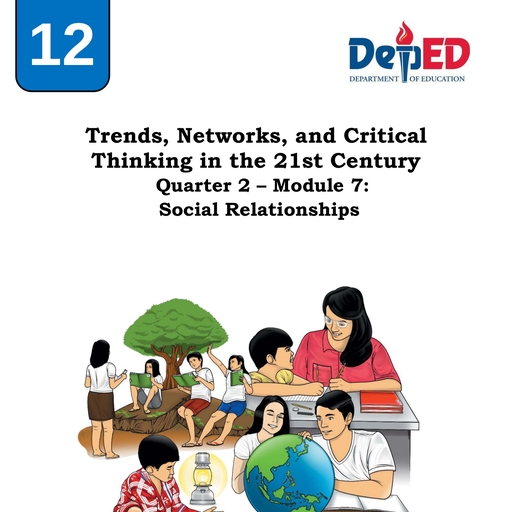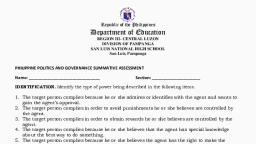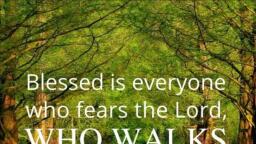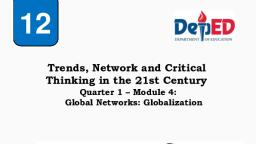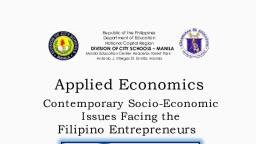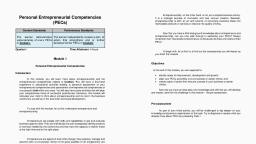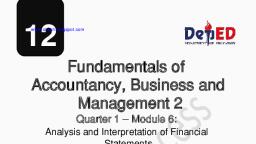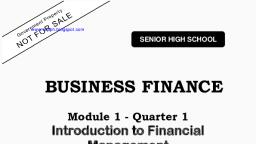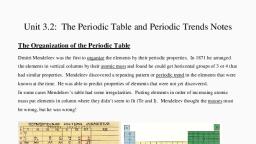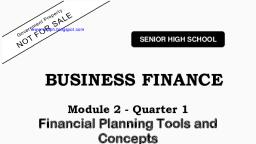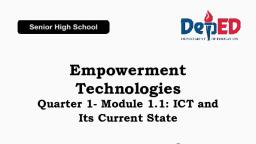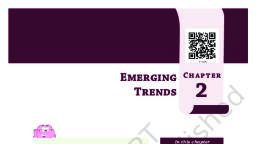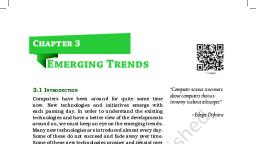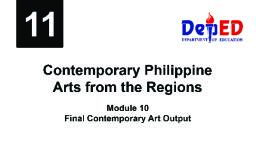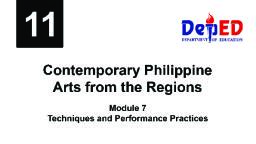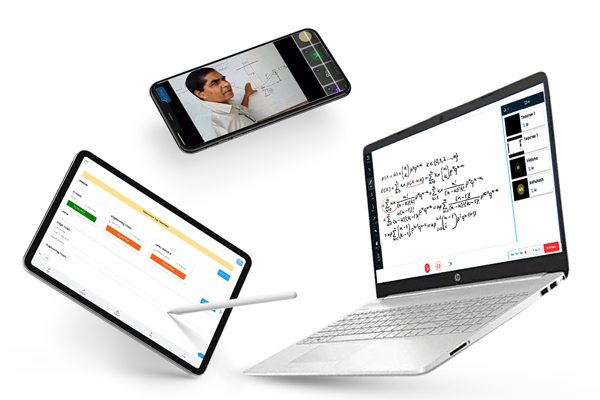Page 1 :
12, Trends, Networks, and, Critical Thinking in the, 21st Century, Quarter 1 – Module 1:, Trend and Fad, Trends, Networks, and Critical Thinking in the 21st Century 12 Self-Learning Module (SLM), Quarter 1 – Module 1: Trend and Fad, First Edition, 2020, Republic Act 8293, section 176 states that: No copyright shall subsist in any work of the Government of the Philippines. However, prior approval of the government agency or office wherein the work is created shall be necessary for exploitation of such work for profit. Such agency or office may, among other things, impose as a condition the payment of royalties., Borrowed materials (i.e., songs, stories, poems, pictures, photos, brand names, trademarks, etc.) included in this module are owned by their respective copyright holders. Every effort has been exerted to locate and seek permission to use these materials from their respective copyright owners. The publisher and authors do not represent nor claim ownership over them., Development Team of the Module, Writers:, Editor:, Reviewers:, Illustrator:, Layout Artist:, Rolly P. Plaga, Dane Lyndelle Love A. Isagan, Rakma T. Salilawan, Rio S. Moreno, Wilma A. Barcelona, Lorelie C. Salinas, Jay Sheen A. Molina, Mark Garcia, Ian Ceasar B. Sipe, Cover Art Designer: Ian Caesar E. Frondoza, Management Team: Allan G. Farnazo, CESO IV – Regional Director, Fiel Y. Almendra, CESO V – Assistant Regional Director, Ruth L Estacio, Ph.D., CESO VI -Schools Division Superintendent Carlos G. Susarno, Ph.D. - Assistant Schools Division Superintendent Gilbert B. Barrera – Chief, CLMD, Arturo D. Tingson Jr. – REPS, LRMS, Peter Van C. Ang-ug – REPS, ADM, Johny Sumugat – Subject Area Supervisor, Lalaine S.J. Manuntag- CID Chief, Nelida A. Castillo- Division EPS In Charge of LRMS Marichu R. dela Cruz -Division ADM Coordinator Sally A. Jabido – Subject Area Supervisor, Senior High School, Trends, Networks, and, Critical Thinking in the, 21st Century, Quarter 1 – Module 1:, Trend and Fad, Introductory Message, For the facilitator:, Welcome to the Trends, Networks, and Critical Thinking in the 21st Century-Grade 12 Self-Learning Module (SLM) on Trend and Fad!, This module was collaboratively designed, developed and reviewed by educators both from public and private institutions to assist you, the teacher or facilitator in helping the learners meet the standards set by the K to 12 Curriculum while overcoming their personal, social, and economic constraints in schooling., This learning resource hopes to engage the learners into guided and independent learning activities at their own pace and time. Furthermore, this also aims to help learners acquire the needed 21st century skills while taking into consideration their needs and circumstances., In addition to the material in the main text, you will also see this box in the body of the module:, Notes to the Teacher, This contains helpful tips or strategies that will help you in guiding the learners., As a facilitator you are expected to orient the learners on how to use this module. You also need to keep track of the learners' progress while allowing them to manage their own learning. Furthermore, you are expected to encourage and assist the learners as they do the tasks included in the module., ii, For the learner:, Welcome to the Trends, Networks, and Critical Thinking in the 21st Century-Grade 12 Self-Learning Module (SLM) on Trend and Fad!, The hand is one of the most symbolized part of the human body. It is often used to depict skill, action and purpose. Through our hands we may learn, create and accomplish. Hence, the hand in this learning resource signifies that you as a learner is capable and empowered to successfully achieve the relevant competencies and skills at your own pace and time. Your academic success lies in your own hands!, This module was designed to provide you with fun and meaningful opportunities for guided and independent learning at your own pace and time. You will be enabled to process the contents of the learning resource while being an active learner., This module has the following parts and corresponding icons:, What I Need to Know, What I Know, What’s In, What’s New, What is It, What’s More, What I Have Learned, What I Can Do, This will give you an idea of the skills or competencies you are expected to learn in the module., This part includes an activity that aims to check what you already know about the lesson to take. If you get all the answers correct (100%), you may decide to skip this module., This is a brief drill or review to help you link the current lesson with the previous one., In this portion, the new lesson will be introduced to you in various ways such as a story, a song, a poem, a problem opener, an activity or a situation., This section provides a brief discussion of the lesson. This aims to help you discover and understand new concepts and skills., This comprises activities for independent practice to solidify your understanding and skills of the topic. You may check the answers to the exercises using the Answer Key at the end of the module., This includes questions or blank sentence/paragraph to be filled in to process what you learned from the lesson., This section provides an activity which will help you transfer your new knowledge or skill into real life situations or concerns., iii, Assessment, Additional Activities, Answer Key, This is a task which aims to evaluate your level of mastery in achieving the learning competency., In this portion, another activity will be given to you to enrich your knowledge or skill of the lesson learned. This also tends retention of learned concepts., This contains answers to all activities in the module., At the end of this module you will also find:, References This is a list of all sources used in developing, this module., The following are some reminders in using this module:, Use the module with care. Do not put unnecessary mark/s on any part of the module. Use a separate sheet of paper in answering the exercises., Don’t forget to answer What I Know before moving on to the other activities included in the module., Read the instruction carefully before doing each task., Observe honesty and integrity in doing the tasks and checking your answers., Finish the task at hand before proceeding to the next., Return this module to your teacher/facilitator once you are through with it., If you encounter any difficulty in answering the tasks in this module, do not hesitate to consult your teacher or facilitator. Always bear in mind that you are not alone., We hope that through this material, you will experience meaningful learning and gain deep understanding of the relevant competencies. You can do it!, iv, What I Need to Know, This module, Trend and Fad will help you become updated and aware of the changes that emerge in our society today. It is here to help you master the Trend and Fad. The scope of this module provides you an avenue to develop your skill in choosing the best things for you. There are so many possibilities that will arise but it depends on how you accept and embrace it or maybe reject it. Moreover, it will guide you to think critically on how to value and prefer best options from the fast growing changes in our society., The module is divided into four lessons, namely:, Lesson 1 – Trend and Fad, Lesson 2 – Spotting a Trend, Lesson 3 – Elements of a Trend, Lesson 4 – Characteristics of a Trend, After going through this module, you are expected to:, differentiate a trend from a fad, explain a process on how to spot a trend, point out the elements that make up a trend, describe the different characteristics of a trend, 1, What I Know, MULTIPLE CHOICE. Choose the letter of the best answer. Write the chosen letter on a separate sheet of paper., An emerging phenomenon that last for a long period of time and transmit existing ventures to the future generations., Trend spotter, Trend, Fad, Trendspotting, What characteristic of a trend that introduces something new like ideas, devices or methods?, Innovation, Consistency, Versatility, None of the above., The following are fads, except ___________., Beeper, Loombands, Brick Game, Mobile legends, What element of trend is rooted on the people’s cultural traditions, beliefs, and values?, Duration of Time, Acceptability, Cultural Basis, Driver, Enabler, Blocker, The following are characteristics of a trend, except ______________., Innovation, Consistency, Creativity, Versatility, Any given phenomenon and prediction which likely to happen is examined by?, Trendspotting, Trend Analysis, Trend spotter, Fad, The following are elements of a trend, except _____________, Driver, Enabler, Blocker, Trend spotter, 2, Trends are popularly accepted by many industries and people are called?, Acceptability, Cultural Basis, Duration of time, Transitory Increase/Decrease, The lifespan of products or ideas that become trends do not disappear quickly is known as?, Transitory Increase/Decrease, Cultural Basis, Acceptability, Duration of Time, It is a trend that shows a transitory change of a particular idea, event, or phenomenon., Acceptability, Cultural Basis, Transitory Increase/Decrease, Diver, Enabler, Blocker, A characteristic of a trend that people can still recognize that this trend is a trademark., Versatility, Consistency, Duration of Time, Innovation, Seeking to overlook or foresee the situation of the future in the present is known as ________________., Trend spotter, Trend, Fad, Trendspotting, It is a very popular form of interest or fashion that only exist for a short span of time., Trend spotter, Trend, Fad, Trendspotting, The following are trending today, except _______________., Miss Everything, Online selling, Tiktok, Dota, A trend that is always appreciated by people despite the difference in culture, place, and race., Innovation, Versatility, Consistency, Acceptability, 3, Lesson, 1 Trend and Fad, This chapter outlines the main concept of social inclination regarding trends that have led to the interest of many people. It also states the continuous development of global trends and the key of accepting and rejecting of the rising patterns., LEARNING OBJECTIVES:, Define a trend and a fad; and, Distinguishes a trend from fad., What’s In, Good day! Welcome to the first part of this module! It is very exciting to know how fast or zippy you are in responding society’s demand when it comes to trends. Are you ready to know the latest? Are you in or out? Well, let’s fasten our seatbelt to discover something new!, Is there something new to you today? Well, everyday different events happen to us and to our surrounding in general. That events probably become part of our lifestyle. The most recent trends serve as an avenue to knowing and understanding what the society has dictates and how people will embrace and relay this to the next generations., We are now on the 21st century and we see a big difference before until now, from people’s lifestyle such as; grooming, fashion, food, mannerism, and point of views. In this era, we really compete on the emerging trends that somehow boost our confidence and be able to fit what society has offered to us., 4, What’s New, Directions: Give your statement about the following items. Write your statement on a separate sheet of paper., What is It, What is Trend?, Trend is an emerging phenomenon that last for a long period of time and transmit existing ventures to the future generations., Trend Analysis, Is an examination of these phenomenon and speculations on the likely impact they will have in the future. Any given phenomenon and prediction which likely to happen or any craze/fad or trend that would likely emerge needs to be examined., Trends are composed of wide variety of information from an existing fields of complex ideas., Trends use overwhelming recognition and pattern identification to create presages in knowing the future., Trends evolution are being evaluated and observed by the use of timeframes., 5, TRENDING, Is a phenomenal scenario that is currently popular to the eyes and taste of the many. It allows preemptive judgments and reactions up to future events. It is something that people follows either in social media or in fashion. Trends are considered as “complex fusion” of yesterday, today, and tomorrow., What is Fad?, Is a very popular form of interest or fashion that only exist for a short span of time., Fad is an exquisite societal pattern but did not last longer. It spreads widely and effectively to the demands of every individual. Moreover, it is a temporary form of fashion, interest, or any crazing activity that people become enthusiastic., DIFFERENCE OF TREND FROM FAD, Trends and fads are actually existing in their respective phenomena that will last depending on the performance of the people who follows the trends and fads. During this scenario a trend will become a fad and this make a difference between the two., Trends are:, Long life span, A style for longer years, Rising slow in popularity, Fads are:, Short life span, Emerge and go quickly, Rising quickly in popularity, What’s More, Activity 1.1: CIRCLE OF TREND, Do it on a separate sheet of paper., On the upper right corner, write one emerging trend., On the lower right corner, write the things about that trend., On the lower left corner, write the things that can be done for that trend., On the upper left corner, write the concrete thing that you can actually do for that trend., 6, What I Have Learned, GUIDE QUESTIONS:, Direction: Read the questions carefully and answer on a separate sheet of paper., Observe your community, what do you think is trending today? Why do you say so?, If people embraces latest trends and ignore that tomorrow, do, “Today is Friendster and tomorrow is Facebook.” Is Friendster a trend today or is it a fad? How about Facebook?, What I Can Do, Activity 1.2: COLLAGE MAKING, Make a collage showing the concept of trends and fads. Use your creativity to do this task., MATERIALS:, Manila Paper, Glue/paste, Pictures from magazines, newspapers, old books, etc., RUBRICS FOR COLLAGE MAKING, 7, Lesson, 2 Spotting a Trend, LEARNING OBJECTIVES:, Apply critical thinking in spotting a trend; and, Specify trend by finding the latest emerging trend., What’s In, Direction: Read the question carefully and explain it by your own idea. Use separate sheet of paper for your answer., Fads and Trends are normally existing anytime and anywhere. How do they exist? And how do they differ from each other?, Give examples of trends. (at least 5), Give examples of fads. (at least 5), What entails when a thing becomes a trend?, What’s New, Direction: Which among these words do you like most? Rank them by putting 1 as your most like and 10 as your least like. Discuss why you like it most and the least that you like. Copy this and write your answer on a separate sheet of paper., 8, What is It, SPOTTING A TREND, Trendspotting is seeking to overlook or foresee the situation of the future in the present., Trend is a continuous event that gives impact to the people and leaves a particular effect. The following statements spot what trend is., A gradual change or development that produces a particular result that is known as a trend is:, a. trend towards/to: “Devices are trending toward touch screen mobiles and laptops., trend in: “The latest trends in social media is….”, an upward/downward trend: “Wars, famines, epidemics and so could cause reversals on the downward trend in morality.”, follow a trend: “Everyone seems to be following the trend for planting indoor plants.”, buck the/a trend (not to be affected by a general trend): “Although industry profits were down, MFG is expected to buck the trend and increase profits., What’s More, Activity 2.1: 100-Word Essay, Choose one (1) from any of these lines and give your opinion. Provide separate sheet of paper for your answer., Which Fad or Trend Shall I Accept or Reject?, How Do I Accept or Reject a Trend?, Essay Rubric, 9, What I Have Learned, Directions: Explain the statements based on your understanding. Write your answer on a separate sheet of paper., How can I intelligently spot, accept, or reject any emerging fad or trend?, How powerful are created trends to convey the interest of people and become enthusiastic to it?, What I Can Do, Activity 2.2: Spot, Look, and Drop!, Direction: Supply the empty leaves in the diagram below with the most spotted trend in your locality today. Draw this on a separate sheet of paper for your answer., 10, Lesson, 3 Elements of a Trend, LEARNING OBJECTIVES:, To elaborate how a trend becomes a trend; and, To illustrate the elements of a trend., What’s In, Congratulations! You are now on the third lesson. Have you ever wondered what makes up a trend? Why there are trends? Why did they exist or how did they exist?, You have already learned the existence of trend and its difference with a fad., Today, you will learn the different elements that make up a trend., Solve Me!, Direction: Using your imagination, solve the picture puzzle. Each parts of the picture have its number code. Then in a separate sheet of paper, write the number code in each box as your answer., What’s New, Unveiling Words!, Direction: Find out the words behind the numbers by getting the letter represented by numbers., ABCD EFGH IJKL MNOP QRST UVWX YZ, Guide Questions:, Direction: Write your answer on a separate sheet of paper., What do you have observed with the activities (picture puzzle and unveiling words)? Are they somehow related to the elements of a trend?, How important are the parts to its whole?, Do you think trend will exist even without its elements? Why?, What is It, UNLOCKING OF WORDS, Catchphrase- a phrase that is often repeated by and therefore becomes connected with a particular organization or person, especially someone famous such as a television entertainer., Innovation- the use of a new method or idea., Emulation- the process of copying something achieved by someone else and trying to do it as well as they have., Phenomena- it is something that exists and can be seen, felt, tasted, etc., especially something unusual or interesting., Cyclical- happening as a complete set of events that repeat themselves regularly in the same order or in a regularly repeated period of time., GUIDE QUESTION:, Trends will not exist without their elements. What do you think are the elements that make up a trend? Write your answer on a separate sheet of paper., 12, ELEMENTS THAT MAKE UP A TREND, Whether it’s memes, viral videos, catchphrases, or the latest design trends, why do certain ideas or activities capture the public imagination? What define a trend as opposed to a short-lived fad?, It is often difficult to spot the start of trends because they boil down to social forces among which styles or tastes change. Once the changes have been shared and adopted by a critical mass, they gain a footing, become firmly embedded in the public psyche, and may even find themselves returning as part of a cyclical process., There’s no magic involved. According to Henrik Vejlgaard, the author of Anatomy of a Trend: “There is nothing mysterious about it and it never just happens out of the blue; though it may sometimes appear to be so. That it is a social process means it’s created by human beings., A trend becomes a trend through a constant cycle of innovation and emulation. It’s the way people embrace one another and interact with one another. People are obsessed with trends because joining a trend means your part of a group; you are in, you belong., ELEMENTS OF TRENDS, Duration of Time, The lifespan of products or ideas that become trends do not disappear quickly. Trends have long staying power and enjoy a long period of time., Acceptability, Cultural Basis, A trend is rooted on the people’s cultural traditions, beliefs, and values. A trend persists and continues because people have seen it as part of a society’s culture., Transitory Increase or Decrease, A trend shows a transitory increase or decrease of a particular idea, event or phenomenon., Driver, Enabler, Blocker, Agents in trend., 13, What’s More, Comic Script, Direction: Based on your observation, make a comic script on how a trend in your community becomes a trend. Create your own title and do it in a long bond paper., Rubric, Category Points, Illustration 13, Grammar/Mechanics 12, What I Have Learned, FILL IT!, Copy on a separate sheet of paper and fill in the blanks with the correct answer., The beginning of a (1) __________ is often difficult to spot because it boils, down to social forces among which styles or taste change. Once the changes have been shared and adopted by a critical mass, they gain a (2) ____________, become, firmly implanted in the persons’ (3) ________, and may even find themselves, returning as part of a (4) __________ process., A writer once said, that there is nothing mysterious about trend and it never happens out of the blue; though it may sometimes appear to be so. However, it is a social process which means that it is created by (5) ___________., 14, What I Can Do, POSTER MAKING, Directions: Make a poster showing the concept of elements of a trend. Base your output on the given rubrics which can be found on your answer sheet., MATERIALS:, Illustration board (1/8 size), Pencil/pen/marker and eraser, Crayons/oil pastel/water color, 15, Lesson, 4 Characteristics of a Trend, LEARNING OBJECTIVES:, Define clearly the characteristics of trends; and, Enumerate and specify every characteristic., What’s In, Good day! How are you to find out! Is there something recent to you today?, On our previous lesson, we have differentiated trend from a fad, the process on spotting a trend and its elements., Directions: Answer the following questions based on your understanding. Write it on a separate sheet of paper., What are elements of trend?, Cite examples of every element., What’s New, Search Me!, Directions: Find and circle all of the direction words that are hidden in the grid., Write your answer on a separate sheet of paper., YOU BELONG TO ME, Direction: Breakdown and think of a person, event or thing. Classify each if it belongs to INNOVATION, CONSISTENCY or VERSATILITY. Give at least three each. Write your answer on a separate sheet of paper., Guide Questions:, What have you noticed on the table?, How did you distinguish a person/event or thing on classifying if it’s innovative, consistent or versatile?, What is It, CHARACTERISTICS OF TRENDS, What is a characteristic?, It is a special quality or trait that makes a person, thing, or group different from others. Its shows special qualities or traits of a person, thing or group., Innovation, A trend should introduce changes and something absolutely new to a community. It is the cat or process of introducing something new like ideas, devices, or methods., Consistency, One thing after the other, people can still recognize that this style or trend or culture or language is a trademark or a mark of a country or a place. Identity has become a part of it., Versatility, a trend always appreciated by people despite the difference in culture, place and race. It is the quality or a state of being versatile (able to do many things)., 17, What’s More, Direction: Identify the following definitions by putting the missing letters on the box to complete it. Use a separate sheet of paper., One thing after the other, people can still recognize at this style or trend or culture or language is a trademark or a mark of a country or a place. Identify has become a part of it., Is always appreciated by people despite the difference in culture, place and race., Introducing changes and something absolutely new to a community., It is the quality or trait that makes a thing, group or person different from other., What I Have Learned, FILL ME!, Direction: Write INNOVATION if the statement is expressing innovativeness, CONSISTENCY if expressing consistency and VERSATILITY if expressing versatility., __________1. Creating and improving a new product like smartphones., __________2. Adaptation of the latest cellphone brand., __________3. A new light bulb with CCTV camera., __________4. Continuity on the use of Facebook., __________5. Adding a new and exciting use for products., 18, What I Can Do, WRITING POETRY, Make a poem that entails the characteristics of trend. Base your output on the given rubrics., Materials: Pen, Paper/Bond paper, RUBRICS FOR WRITING POETRY, Assessment, MULTIPLE CHOICE. Choose the letter of the best answer. Write the chosen letter on a separate sheet of paper., An emerging phenomenon that last for a long period of time and transmit existing ventures to the future generations., Trend spotter, Trend, Fad, Trendspotting, What characteristic of a trend that introduces something new like ideas, devices or methods?, Innovation, Consistency, Versatility, None of the above., The following are fads, except ___________., Beeper, Loombands, Brick Game, Mobile legends, What element of trend is rooted on the people’s cultural traditions, beliefs, and values?, Duration of Time, Acceptability, Cultural Basis, Driver, Enabler, Blocker, The following are characteristics of a trend, except ______________., Innovation, Consistency, Creativity, Versatility, Any given phenomenon and prediction which likely to happen is examined by?, Trendspotting, Trend Analysis, Trend spotter, Fad, The following are elements of a trend, except _____________, Driver, Enabler, Blocker, Trend spotter, Trends are popularly accepted by many industries and people are called?, Acceptability, Cultural Basis, Duration of time, 20, The lifespan of products or ideas that become trends do not disappear quickly is known as?, Transitory Increase/Decrease, Cultural Basis, Acceptability, Duration of Time, It is a trend that shows a transitory change of a particular idea, event, or phenomenon., Acceptability, Cultural Basis, Transitory Increase/Decrease, Diver, Enabler, Blocker, A characteristic of a trend that people can still recognize that this trend is a trademark., Versatility, Consistency, Duration of Time, Innovation, Seeking to overlook or foresee the situation of the future in the present is known as ________________., Trend spotter, Trend, Fad, Trendspotting, It is a very popular form of interest or fashion that only exist for a short span of time., Trend spotter, Trend, Fad, Trendspotting, The following are trending today, except _______________., Miss Everything, Online selling, Tiktok, Dota, A trend that is always appreciated by people despite the difference in culture, place, and race., Innovation, Versatility, Consistency, Acceptability, 21, Additional Activities, A. PREDICTION ON TREND AND FAD, Direction: Below is a diagram that states a situation of trend or fad. Identify if the statement is trend or fad then write your prediction on the last column., 22





